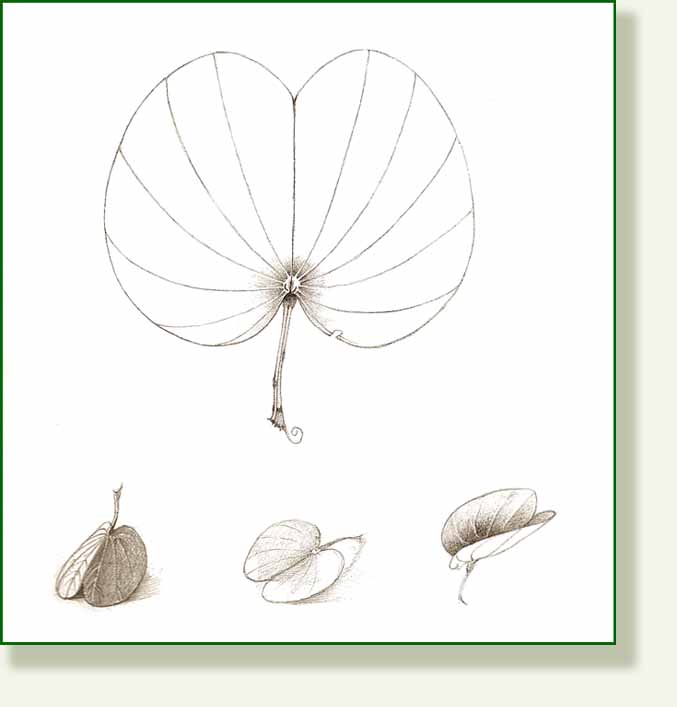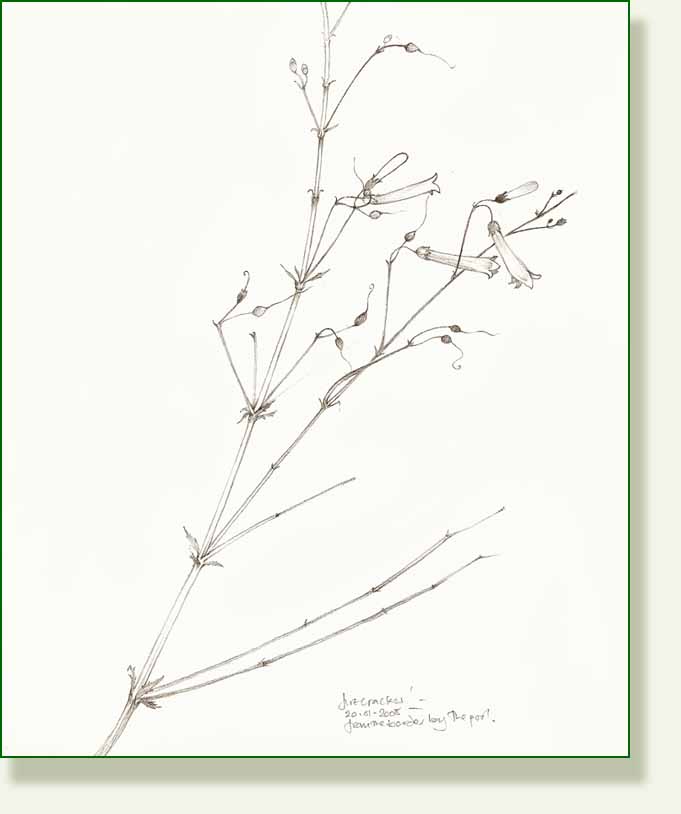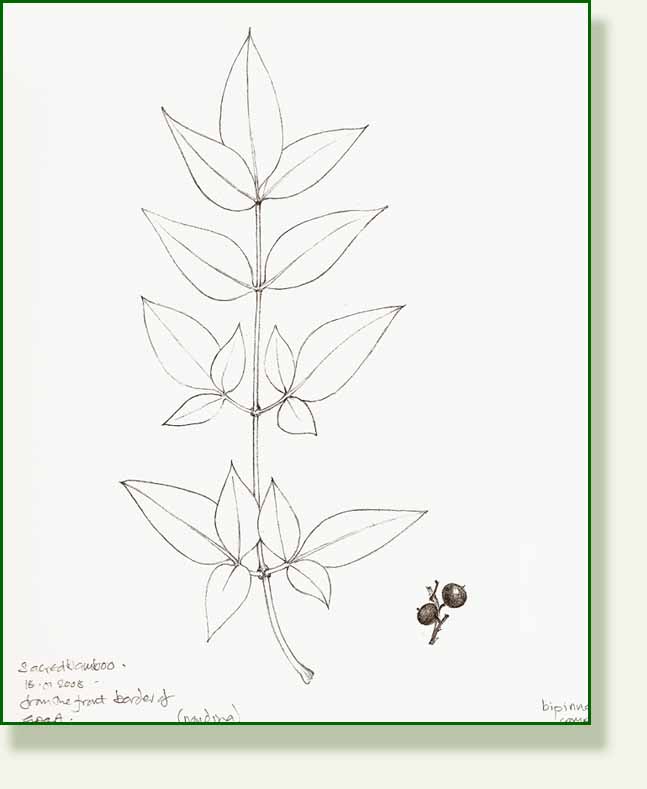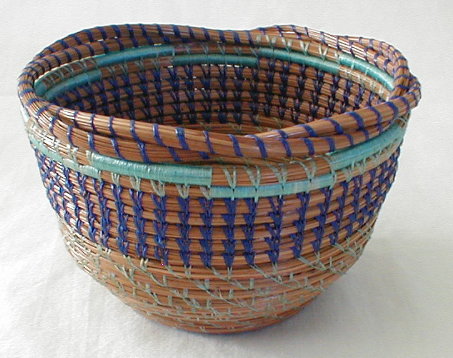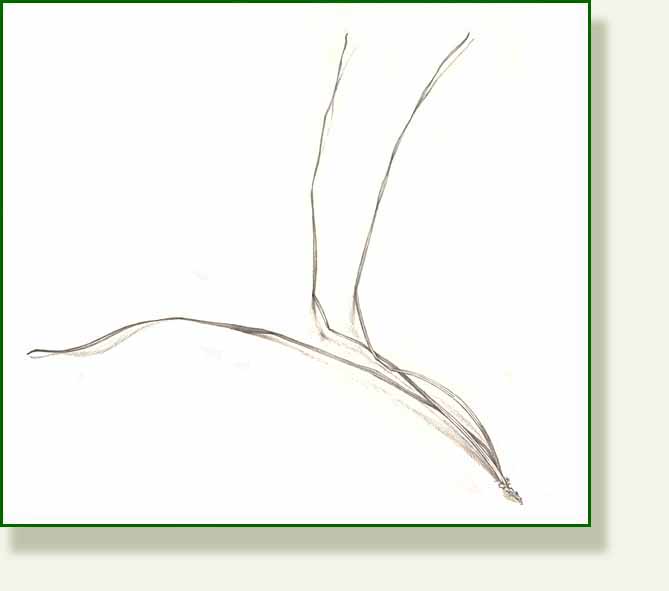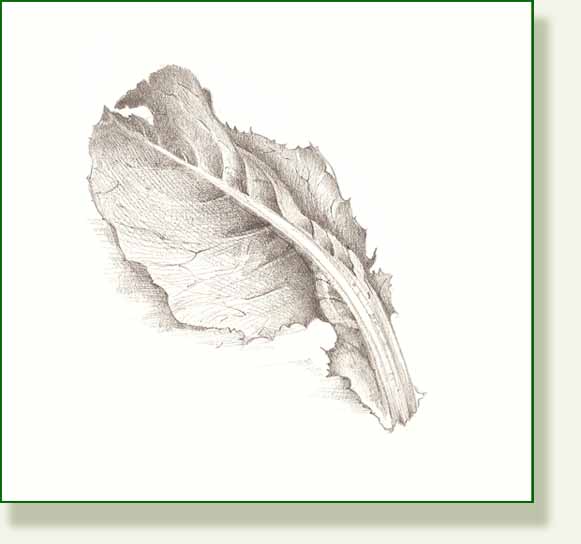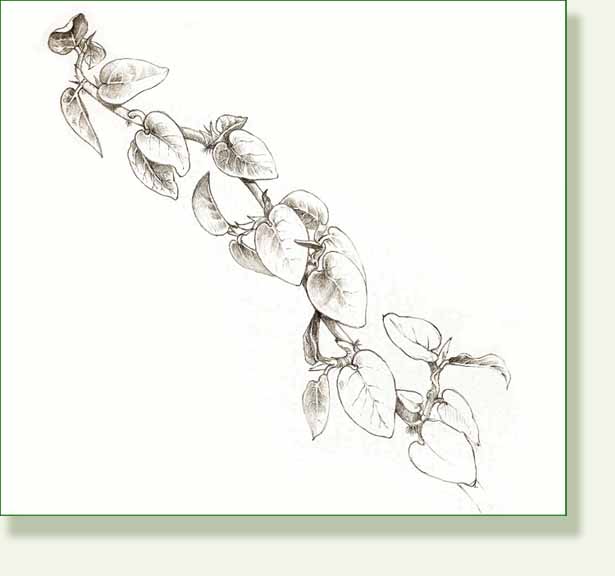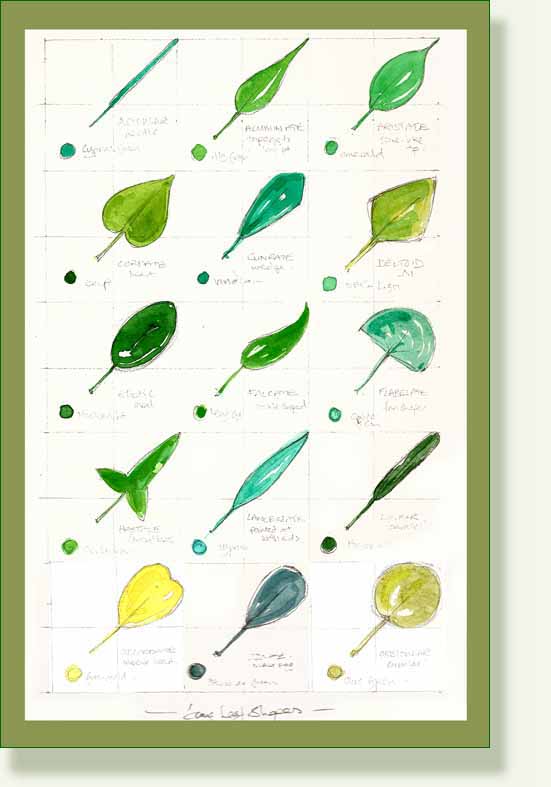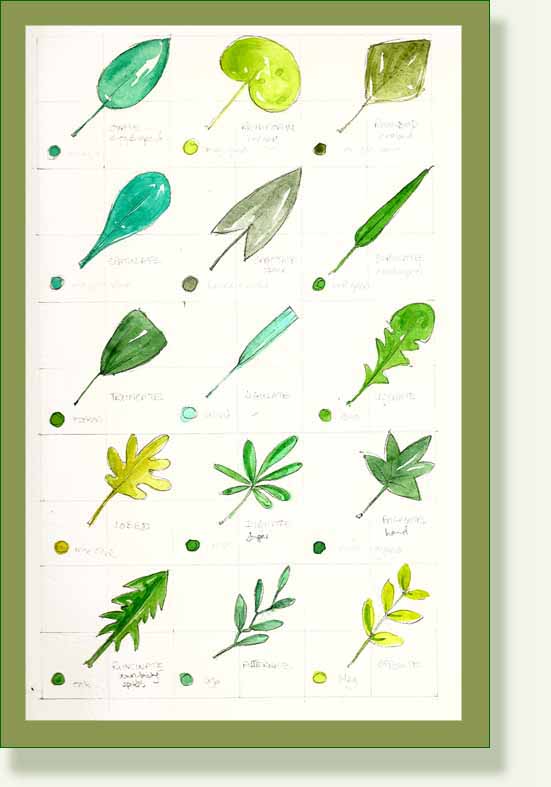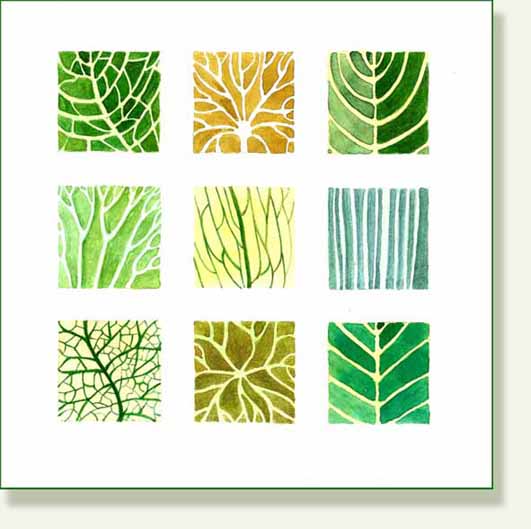Last night it rained hard and heavy, hour after hour. This morning the sun came out and it was like a sweet balmy May morning in England. Spring is definitely jogging the elbow of those plants who are allowed a winter layoff here in Florida. Even the ones reduced to black slimy heaps by the big ugly freeze are showing new growth. Its very encouraging.
Trachelospermum asiaticum is the Latin name for this very well behaved creeping ground cover plant that is everywhere in the urban car parks, traffic islands and mall borders and after 3 weeks of pencil work I am trying some pen and ink.
This was done on Bristol board with a technical pen, not my favourite surface or pen… but I am very out of practice and cannot remember when I last did a careful study in pen and ink. My normal style with a pen is much sketchier, using a crow quill dip pen which has a less regular but more expressive line. This is much more to my taste but maybe not so good for botanical work. I will just have to practice and try a few more combinations of paper and pen
A word about Michaels
I am hoping to try another study of this little plant with the crow quill nib and Indian ink which will mean a trip to Michaels the big chain craft store just across the easy road. This is crafter heaven, spoilt only by the overpowering smell of dried flowers and the soporific muzak. Customers glide serenely up and down the displays, wafted on a cloud of artificial jasmine and mesmerised by soupy saxophone love songs. Its like being encased in a huge bubble of niceness and is sometimes hard to break the surface tension and escape back to the mean streets of Winter Park.
However it is fascinating to see their changing displays. The last lingering Christmas baskets have been wheeled away and the aisles are ablaze with Valentine reds and even an Easter chick has crept onto the shelves….and of course I am the very first in line with my 40% discount coupon!..
_____________________________________________

Technical pen on Bristol Board
Crow Quill nib and Indian ink on Bristol Board.
A bit more expressive but not so accurate!




